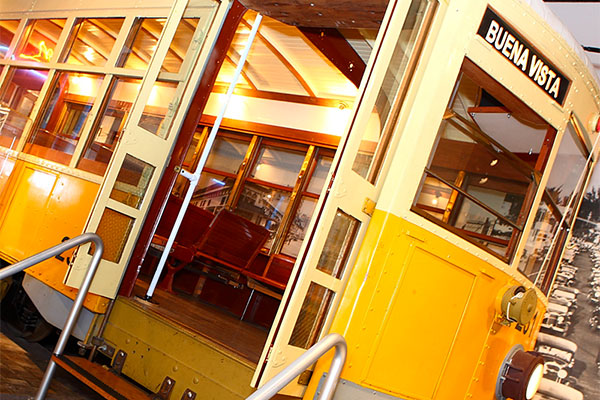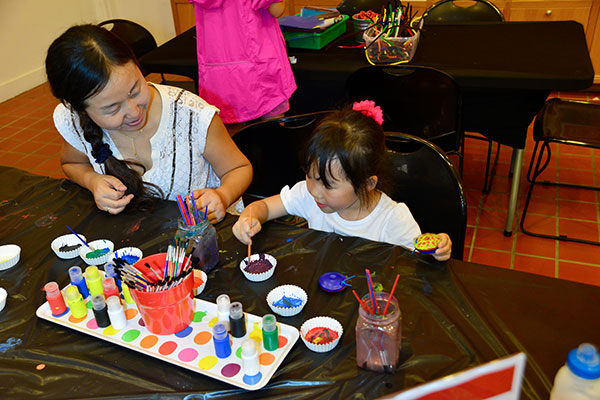Number XLI (1981)
The John DuBois Family of Jupiter: A Florida Prototype, 1887-1981
by Harry A. Kersey, Jr.
Biography of John DuBois, especially in the context of Jupiter (Fla.) history. Includes biographical details about his wife, Bessie Wilson DuBois, and his father, Harry DuBois.
The Seminole Women of Florida
by Mary Barr Munroe, introduction by Arva Moore Parks.
Mary Barr Munroe’s personal recollection of Seminole women and Seminole domestic life. Written before 1922.
Richard Fitzpatrick’s South Florida, 1822-1840, Part II: Fitzpatrick’s Miami River Plantation
by Hugo L. Black, III.
Biography of Richard Fitzpatrick, beginning in 1829. Topics include his plantation on the Miami River, the Second Seminole War, his activities in the Legislative Council (1835-1840) and the Constitutional Convention of 1838.
Sugar along the Manatee: Major Robert Gamble, Jr. and the Development of Gamble Plantation
by Michael G. Schene.
Gamble operated a sugarcane plantation, on the Manatee River near present-day Bradenton, 1844-1858. Includes a description of sugarcane growing, sugar manufacture, and the use of enslaved Africans.
Number XLII (1982)
The Wagner Family: Pioneer Life on the Miami River
by Margot Ammidown.
Family history from 1855, when William Wagner opened a store on the Miami River, until the early 1900s. Brief history of their home, the oldest standing house in Miami.
Library in a Pioneer Community: Lemon City, Florida
by Ron Blazek.
History of the Lemon City Branch Library, in present-day Little Haiti, including analysis of which library came first: Lemon City or Coconut Grove.
The Cleveland Connection: Revelations from the John D. Rockefeller – Julia Tuttle Correspondences
by Edward N. Akin.
Clevelanders Rockefeller (Flagler’s Standard Oil partner) and Tuttle were acquainted before Flagler and Tuttle moved to Florida. Includes excerpts from correspondence, 1886-1889.
Changing Economic Patterns in the Miami Metropolitan Area, 1940-1980
by Raymond A. Mohl.
Summarizes the the trends and developments in Greater Miami’s economy that transformed it into an international business center.
Number XLIII (1983)
Diary of an Unidentified Land Official, 1855
edited by Wright Langley and Arva Moore Parks.
Excerpts from the diary of a visitor to Key West, the Florida Keys and Miami, including a visit to George Ferguson’s farm and comptie mill on the Miami River.
My Life in South Florida
by Edna Morris Harvey.
Memoir of growing up in the Lake Okeechobee region and West Palm Beach, 1917-1920s.
Newspaper Pioneering on the Florida East Coast, 1891-1895
by Ruby Andrews Myers.
First-person account of working for The Tropical Sun. Topics include the Celestial Railroad, her experiences as a correspondent for the newspaper, the Lake Worth region and Juno when it was Dade County’s seat.
Life in Palm Beach County, Florida, 1918-1928, Part I: Engineering and Farming
from Noah Kellum Williams’ “Grandpop’s Book,” edited, with an introduction, by Charlton W. Tebeau.
Excerpt from autobiography. Williams worked as an engineer in drainage and development projects, including Kelsey City (present-day Lake Park), and farmed at Pahokee and Monet (now Palm Beach Gardens and Jupiter).
Number XLIV (1984)
Retracing the Celestial Railroad
by Geoffrey Lynfield.
Follow-up article to Professor Shappee’s article in the April 1961 issue of the Florida Historical Quarterly. Presents new findings and research on the railroad that ran from Juno Beach to Jupiter Inlet from 1893 to 1895.
“… Everything Carried the Face of Spring” : Biscayne Bay in the 1770s
by Daniel L. Schafer.
History of British Lieutenant Frederick George Mulcaster’s 1772 survey of Biscayne Bay, with a summary of his findings.
Miami’s City Marshal and Law Enforcement in a New Community, 1896-1907
by Paul S. George.
The Florida Mutineers, 1566-67
by Eugene Lyon.
History of the 1566 mutinies among Pedro Menéndez de Avilés’ troops
Life in Palm Beach County, Florida, 1918-1928: Part II, The Real Estate Boom and the Hurricane of 1928
from Noah K. Williams’ “Grandpop’s Book,” edited by Charlton W. Tebeau.
Number XLV (1985)
Birds of a Feather: The Coconut Grove Audubon Society, 1915-1917
by Emily Perry Dieterich.
Includes excerpts from society minutes.
Seminole Beach, “The Best Beach in Dade County”
by Frederick H. Harrington.
During the 1910s Thomas Hamilton started a real estate development, Seminole Beach, in present-day Hallandale Beach.
“The Firing of Guns and Crackers Continued Till Light”
A Diary of the Billy Bowlegs War
edited with commentary by Gary R. Mormino.
Excerpts from the diary of an unidentified pioneer living in Tampa during the Third Seminole War. Excerpts written between 1855 an 1856.
Railroad Stations in Dade County
by Seth Bramson.
List of Florida East Coast Railway, Seaboard Airline Railroad and Amtrack stations within the present-day boundaries of Miami-Dade County.
Number XLVI (1986)
Last Command: The Dade Massacre
by W. S. Steele.
History of the December 1835 battle from which Dade County derives its name.
Boca Raton and the Florida Land Boom of the 1920s
by Donald W. Curl.
Describes architect and developer Addison Mizner’s work in Boca Raton.
The State of Florida and the Florida Indians, 1954-1961
by James Covington.
Desribes the $40,000,000 lawsuit before the Indian Claims Commission, the federally recognized organization of the Seminole and Miccosukee tribes, and the efforts of the state and governor Leroy Collins to assist the Indians
The Development of the Overseas Highway
by Alice Hopkins.
History of the destruction of the Florida East Coast Railway Oversea Extension and the construction of the Overseas Highway, the automobile route that replaced the railroad.
The Log of the Biscayne House of Refuge
[edited] by Dr. Thelma Peters.
Excerpt from the journal of Hannibal Dillingham Pierce, keeper of the Biscayne House of Refuge. Journal entries date from 1900 to 1903.
Number XLVII (1987)
History of The Miami News, 1896-1987
by Howard Kleinberg.
Centennial history of The Miami News, written by its last editor.
Founded in 1896 as the Miami Metropolis, this daily newspaper ceased publication December 31, 1988.
Watch Miami: The Miami Metropolis and the Spanish-American War
by Thomas F. Fleischmann.
An analysis of The Miami Metropolis’ coverage of the Spanish-American War, especially of the military encampment in Miami.
Arch Creek: Prehistory to Public Park
by Emily Perry Dieterich.
History of Arch Creek and Arch Creek Park, a Miami-Dade County park in the City of North Miami.
Number XLVIII (1988)
The Early Years Upriver
by Donald C. Gaby.
History of the Miami River from 1821 to 1913, especially upstream. Topics include the rapids, the Ferguson farm, Musa Isle and the construction of the Miami Canal.
The Bilging of the Winchester
by William M. Straight, MD.
Describes the last voyage of the British warship Winchester, especially concerning sickness and death among the crew. The author concludes that yellow fever was the cause.
After most of the crew fell ill and died, the Winchester sank on the reef off Key Largo in 1695.
Santeria: From Africa to Miami via Cuba; Five Hundred Years of Worship
by Diana Gonzalez and Sara Maria Sanchez.
Traces the evolution of Santería from the African diaspora in Cuba to its contemporary status among white, middle class suburbanites in the Miami region.
Liberty Square, 1933-1987: The Origins and Evolution of a Public Housing Project
by Paul S. George and Thomas K. Peterson.
History of Liberty Square, built in the 1930s for Miami’s low-income African-Americans, and of the changing demographics of people living there.
Florida’s first housing project, built by the federal Public Works Administration (PWA).
Among the Farmers [part 1]
[by Charles G. Featherly; introduction] by Howard Kleinberg.
Excerpts from a series of articles in the Miami Metropolis, first published in 1898. This article covers Coconut Grove and Miami River region. Kleinberg’s introduction includes a biographical sketch.
In 1898 Featherly conducted an informal census of farmers and farms in Dade County, from Fort Lauderdale to Cutler.
Number XLIX (1989)
Barry University: its Beginnings
by Sister Eileen F. Rice, O.P.
Describes the founding of Barry University, 1937-1941.
Barry is a private, Catholic university in Miami Shores.
Richard Ashby: Miami Pioneer
by Donald C. Gaby.
The life of real estate invester Richard Ashby. Ashby moved to Miami in 1902, living first in downtown Miami and later in Edgewater.
Among the Farmers [part 2]
[by Charles G. Featherly; introduction] by Howard Kleinberg.
Excerpt from the Miami Metropolis, November 18, 1898, in which Featherly describes the farms and farmers living in Allapattah, Lemon City, Little River and Biscayne (Miami Shores).
Shadows in the Sunshine: Race and Ethnicity in Miami
by Raymond A. Mohl.
Summarizes the history of Blacks in the Miami region, and contrasts that history with the public image (until 1980) of the area as a paradise for Whites and Hispanics.
Number L (1990)
Pioneering in Suburbia [part 1]
by Nixon Smiley.
First-person account of living in present-day Pinecrest between 1951 and 1976. Includes the acquisition of five acres on Montgomery Drive, the design of a house by Alfred Browning Parker, its construction, and landscaping the property.
The Carver Village Controversy
by Teresa Lenox.
When Carver Village, an apartment complex in the Edison section of Miami, began accepting Black tenants, integration of the area and racial protests began. In 1951, Carver Village was bombed several times.
Among the Farmers [part 3]
introduction by Howard Kleinberg.
Excerpt from article in November 25, 1898, issue of the Miami Metropolis. Describes farms and farmers in Biscayne (Miami Shores), Ojus, Dania and Ft. Lauderdale.
Electronic versions of Tequesta have been produced by Florida International University Libraries’ Digital Collections Library, thanks to funding from the State University Libraries’ Florida Heritage Program.



